Trees Birds Mammals Fish Amphibians Reptiles
Wild Algarve
Bookshop
Fraxinus excelsior - Ash
Phylum: Magnoliophyta - Class: Magnoliopsida - Order: Lamiales - Family: Oleaceae
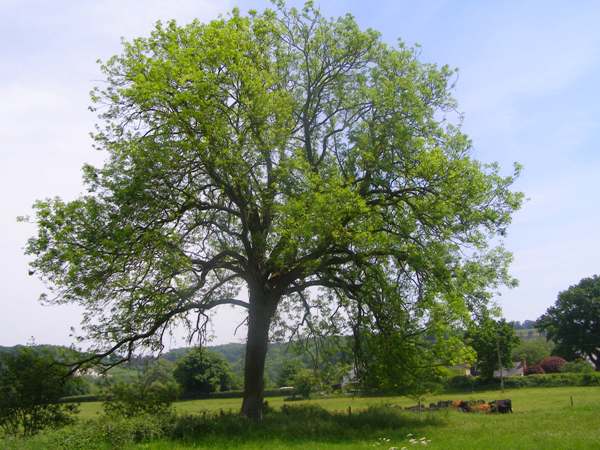
The Ash is native to Britain. These trees, which are one of the last to burst into leaf in springtime and yet among the first to drop their leaves in the slightest of early-autumn frosts, can live for more than 400 years, reaching a height of 45m in ideal situations. They seem to do best in sheltered, sunlit locations.
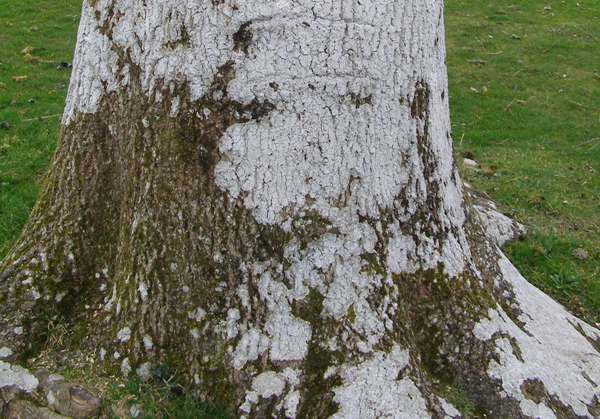
Ash wood is a traditional material for tool handles,
tennis rackets and snooker cues; it is also used as firewood because it
is one of very few kinds of wood that burns well even when 'green' (freshly cut). Traditionally, Ash was coppiced, often in
hedgerows, and evidence in the form of some huge
boles with multiple trunks emerging at head height can still be see in
many parts of Britain and Ireland.
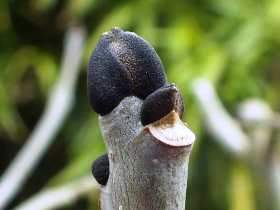
As winter progresses so the buds of Ash expand and become more evident. Their dark grey or matt black colouring is particularly distinctive, making the Ash one of the easiest of the deciduous trees to identify before the buds burst.
The leaves of the Ash tree are often among the last to
open (and they are also among the first to fall if an early autumn frost strikes); they are unlikely to be confused with the leaves of any of the broadleaf deciduous trees seen commonly in the wild in Britain and Ireland other than perhaps Elder leaves; but the bark of an Elder tree is so distinctive that confusion between Ash and Elder is hardly likely. Ash flowers open
before the leaf buds have burst, with the female flowers being somewhat longer than the male
flowers.

Ash leaves in springtime
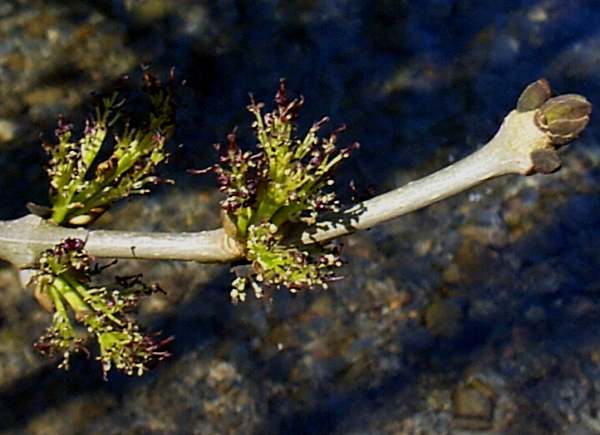
Female flowers
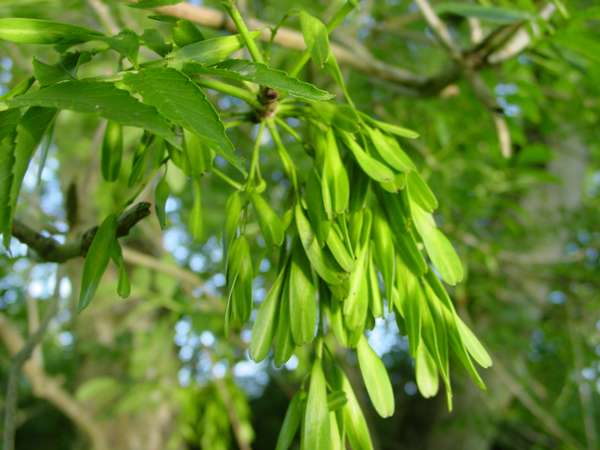
Ash seeds, commonly known as 'keys'
The female flowers develop into fruits, and because they hang in bunches the
fruits of the Ash tree are commonly referred to as 'keys'.
Some trees - Holly for example - produce male and female flowers on separate trees; they are termed 'dioic', which translates as 'two houses'. Other species produce both male and female flowers on the same tree. The Ash trees appear to be undecided on the matter of gender: some are male, some are female, and others produce both male and female flowers - usually well separated but on the same tree. That alone is strange enough, but the Ash tree has another trick up its sleeve. A tree that is male one year can produce female flowers the next, and a female tree can become male.
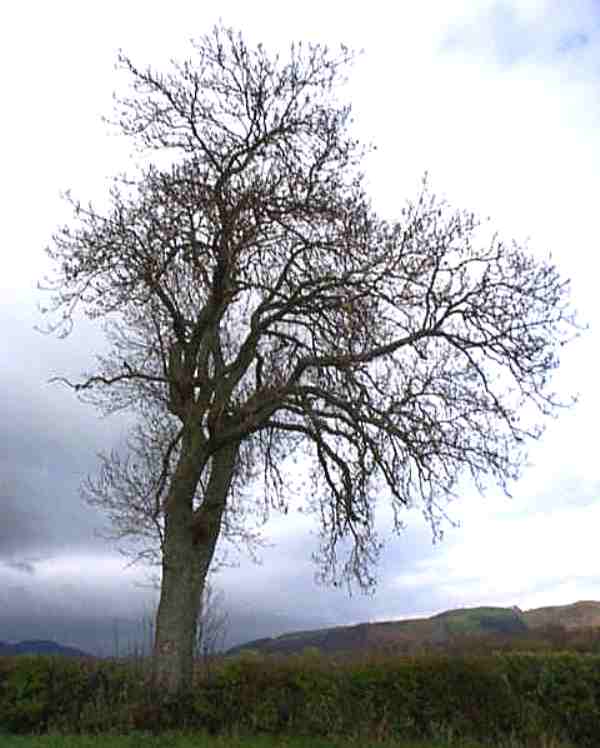
In winter the Ash tree has a distinctive silhouette. The lower branches hang down but then have upturned tips, and as early in the year as mid January the large black buds, from which bright green leaves will emerge in springtime, are clearly visible even from a distance.
Ash trees belong to the olive family, Oleaceae. Despite the similarity of leaf shape, the Rowan or Mountain Ash, Sorbus aucuparia, and the true Ash, Fraxinus excelsior, are not closely related; in fact Rowans belong to the rose family, Rosaceae, and so are more closely related to Laurel, Blackthorn, Hawthorn and Wild Cherry.
Fungi associated with Ash trees
Few plants and even fewer fungi grow under Ash (although Ash trees are known to form mycorrhizal relationships with some boletes and at least one Amanita species).
Damaged and dying Ash trees are often attacked by the bracket fungus Polyporus squamosus, Dryad's Saddle.

Dead standing Ash trees and fallen trunks and branches are home to many conspicuous wood-rotting fungi, however, including several of the larger ascomycetes such as Dead Man's Fingers, Xylaria polymorpha (above), and King Alfred's Cakes, Daldinia concentrica (below). King Alfred's Cakes, also known as Cramp Balls, are hard, inedible fruitbodies that appear most often on Ash trees but are also seen occasionally on Beech. Inside the fruitbody there are concentric silver-grey and black layers - hence the specific epithet.
